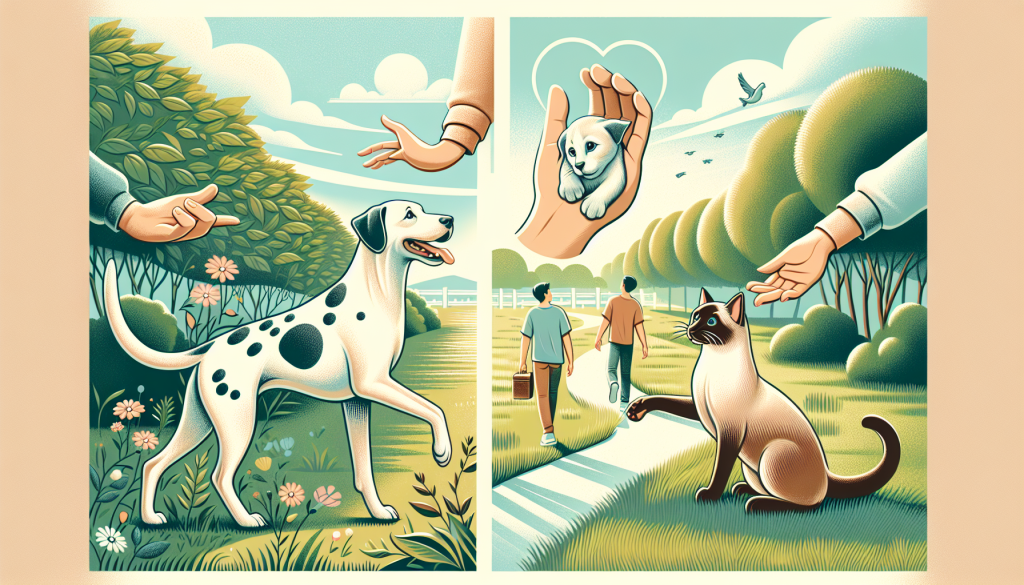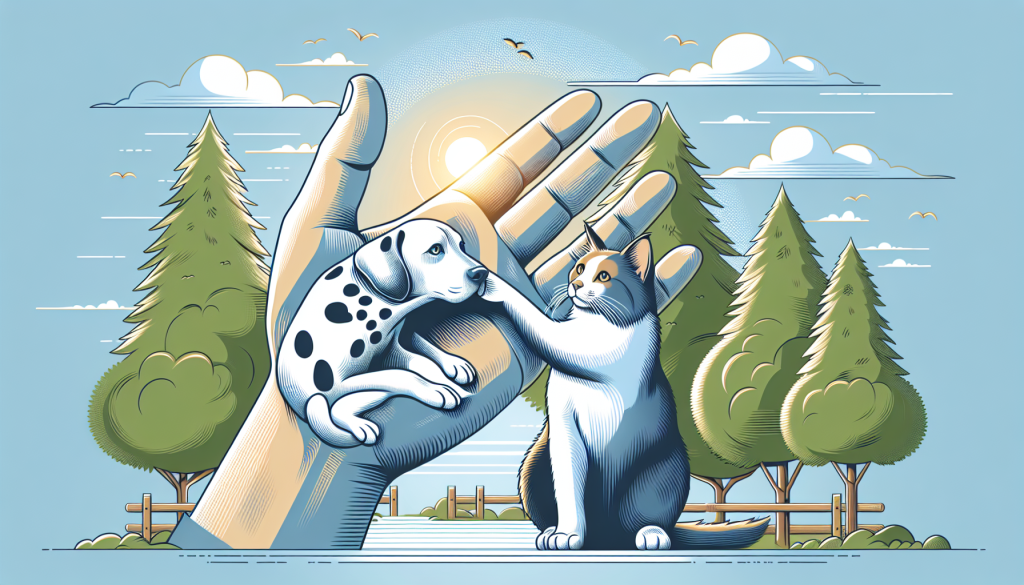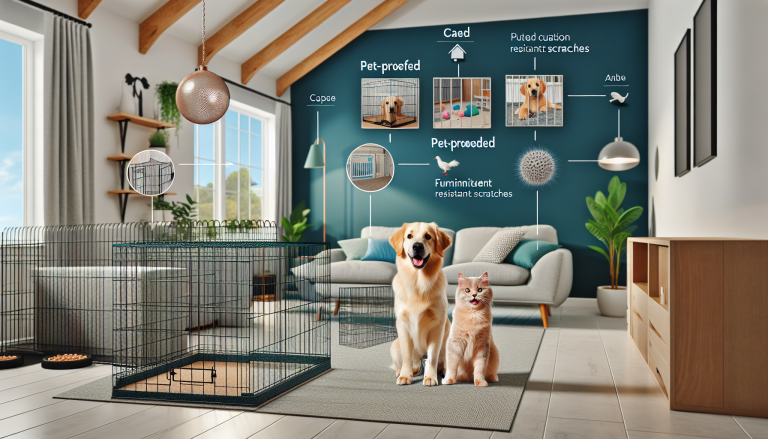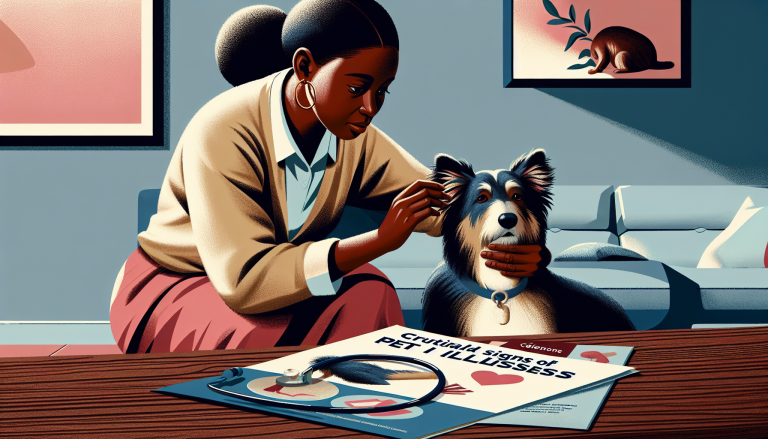If you’re a pet owner, you must have undoubtedly heard about the importance of socializing your furry companions. But have you ever wondered why it’s so crucial? Socializing your pet is not just about ensuring they have a ready playmate or neighborly pup to interact with. It goes beyond that. It’s about setting the foundation for a well-balanced and happy pet, one that is confident and well-behaved in various situations. In this article, we will explore the significance of socializing your pet and provide you with valuable tips to make the process a breeze. So, buckle up and get ready to embark on an exciting journey of pet socialization!
Table of Contents
ToggleWhy is socializing your pet important?
Socializing your pet is crucial for a variety of reasons. First and foremost, it helps prevent behavioral problems. By exposing your pet to different environments, people, and animals, you are helping them develop positive associations and reducing the likelihood of aggression, fear, or anxiety-related behaviors.
Furthermore, socialization reduces anxiety and fear in pets. When they are familiar with various situations and stimuli, they are less likely to feel overwhelmed when faced with new experiences. This can greatly improve their overall well-being and quality of life.
In addition to mental health benefits, socializing your pet also enhances their obedience and responsiveness. Through positive reinforcement training and exposure to different social settings, they learn to follow commands and respond appropriately to various stimuli. This not only makes them easier to handle but also improves their safety in different situations.
Another important reason to socialize your pet is to create a well-rounded companion. A socialized pet is more adaptable to changes, whether it’s moving to a new home, traveling, or encountering new people or animals. By exposing them to diverse experiences, you’re helping them become confident and adaptable, which is essential for their overall happiness and your peace of mind.
Last but not least, socializing your pet strengthens the human-animal bond. When you invest time and effort into socializing your pet, you are building trust and creating a strong connection with them. This bond not only benefits their overall well-being but also enhances the joy and fulfillment you both experience in the relationship.
When should you start socializing your pet?
The earlier you start socializing your pet, the better. Ideally, the socialization process should begin during the early stages of their life. This is when they are most receptive to new experiences and less likely to develop fear or anxiety-related behaviors.
However, if you’ve adopted an older pet or missed the early stages, don’t worry. It’s never too late to start socializing your pet. As soon as you bring them home, make socialization a priority. Whether they are a puppy, kitten, or adult, they can still benefit greatly from exposure to new people, animals, and environments.
Keep in mind that socialization should occur before your pet reaches sexual maturity. Around this time, they tend to become more cautious or territorial, and it may be more challenging to introduce new experiences. Therefore, start early and be consistent in your socialization efforts to ensure the best results.
Choosing the right socialization techniques
When it comes to socialization, choosing the right techniques is essential. Here are a few effective strategies to help you socialize your pet:
Positive reinforcement training:
One of the most effective techniques for socializing your pet is positive reinforcement training. By rewarding good behavior with treats, praise, or play, you’re reinforcing positive associations and encouraging your pet to repeat desirable behaviors. This method is not only effective but also fosters a trusting relationship between you and your pet.
Exposure to different environments:
Expose your pet to various environments to help them become comfortable in different settings. Take them for walks in the park, on car rides, and to different indoor and outdoor spaces. This exposure will help them become familiar with different sights, sounds, and smells, reducing their fear or anxiety in new situations.
Introducing them to various people and animals:
Introduce your pet to a diverse range of people and animals to ensure they are comfortable around different individuals and species. Arrange playdates with friendly, well-behaved dogs or cats. Allow your pet to interact with people of all ages, including children, adults, and seniors. This will help them become well-socialized and friendly companions.
Gradual desensitization:
If your pet displays fear or anxiety towards specific situations or stimuli, gradually expose them to these triggers in a controlled manner. For example, if your dog is afraid of thunderstorms, play a recording of thunder at a low volume and gradually increase the volume over time. This gradual exposure and desensitization can help them overcome their fears and anxieties.
Group training classes:
Enroll your pet in group training classes where they can interact with other pets and their owners in a controlled environment. These classes not only provide valuable obedience training but also offer opportunities for socialization. Your pet will learn to follow commands while being exposed to different dogs, people, and distractions.
Socializing tips for dogs
Dogs thrive on social interaction, and socializing them is essential for their overall well-being. Here are some tips to help you socialize your canine companion:
Take them for regular walks:
Regular walks provide opportunities for your dog to encounter other people, dogs, and environmental stimuli. Make sure to select safe and dog-friendly areas for your walks, such as parks or walking trails. This will help your dog become familiar with different sights, sounds, and scents, and meet other friendly dogs and their owners.
Visit dog parks or attend dog-friendly events:
Dog parks and dog-friendly events are excellent places for your dog to socialize with other dogs in a controlled and supervised environment. They can engage in off-leash play and interact with various breeds, sizes, and temperaments. Take advantage of these opportunities to encourage positive socialization experiences for your dog.
Arrange playdates with other dogs:
Set up playdates with other dogs that are known to be friendly and well-socialized. This can be done at a friend’s house, a local park, or even a playgroup specifically designed for dogs. During these playdates, closely supervise the interactions to ensure everyone is comfortable and safe.
Expose them to different sounds and objects:
Expose your dog to a variety of sounds and objects to help them become accustomed to different stimuli. This can include household appliances, doorbells, vacuum cleaners, or the sound of fireworks. Gradually introduce these sounds to your dog and associate them with positive experiences and rewards.
Enroll in obedience classes:
Enrolling your dog in obedience classes not only provides valuable training but also facilitates socialization. Your dog will learn to follow commands while being exposed to other dogs and people. This controlled environment allows them to develop social skills and build confidence under the guidance of a professional trainer.
Socializing tips for cats
Socializing cats may require a different approach compared to dogs, as cats have unique behavioral traits and preferences. Here are some tips to help you socialize your feline companion:
Provide vertical spaces and hiding spots:
Cats feel more secure when they have access to vertical spaces, such as cat trees, shelves, or window perches. These elevated areas give them a sense of control, allowing them to observe their surroundings while feeling protected. Additionally, provide hiding spots where they can retreat when they feel overwhelmed or anxious.
Introduce them to different surfaces and textures:
Expose your cat to different surfaces and textures to help them become comfortable with variability. This can include introducing them to scratching posts, various bedding materials, different types of flooring, and different textures for them to walk on. By doing so, you’ll help them develop confidence and adaptability.
Offer interactive toys and puzzles:
Provide your cat with interactive toys and puzzles to keep their minds stimulated and encourage positive socialization experiences. Toys that mimic prey, puzzle feeders, or treat dispensers can engage their natural instincts and provide mental enrichment. This kind of interactive playtime helps foster a bond between you and your feline friend while keeping them entertained and mentally engaged.
Allow supervised outdoor exploration:
While it’s important to keep cats indoors for their safety, supervised outdoor exploration can be beneficial for their socialization. Consider using a harness and leash to introduce your cat to the outdoor environment. This supervised outdoor time can expose them to new sights, sounds, and smells, providing valuable mental stimulation.
Use positive reinforcement during training:
When training your cat, utilize positive reinforcement techniques. Reward your cat with treats, praise, or play when they exhibit desired behaviors. This positive association will help your cat associate training sessions with enjoyable experiences, making the socialization process easier and more effective.
Common challenges in socializing pets
Socializing pets can sometimes come with challenges. Here are some common challenges you may encounter:
Aggression towards other animals:
Some pets may exhibit aggression towards other animals, making socialization difficult. This aggression might stem from fear, possession issues, or previous negative experiences. It’s important to address these concerns with the help of a professional trainer or behaviorist who can provide guidance and develop a customized plan for your pet.
Fear or anxiety towards new situations:
Just like humans, pets can experience fear or anxiety when faced with new situations. This can manifest as trembling, hiding, excessive vocalization, or even destructive behavior. Identifying and understanding the source of their fear or anxiety is essential in order to help them overcome these challenges through desensitization and positive reinforcement.
Excessive barking or meowing:
Excessive barking or meowing can be a result of stress or a lack of socialization. If your pet consistently vocalizes excessively, it’s important to address this behavior through training and behavior modification techniques. Identifying the triggers and providing appropriate outlets for their energy can help reduce excessive vocalization.
Lack of confidence or shyness:
Some pets may lack confidence or exhibit shyness, making socialization a challenge. It’s essential to approach socialization with patience and provide a safe and supportive environment for them to gradually build confidence. Consistency and positive reinforcement techniques can help them overcome their shyness and develop social skills.
Household accidents or destructive behavior:
Pets who are not properly socialized may exhibit household accidents or destructive behavior as a result of anxiety or boredom. It’s important to address these issues through appropriate training, mental and physical stimulation, and providing a structured routine. This will help channel their energy and prevent unwanted behaviors.
How to address socialization challenges
Addressing socialization challenges requires patience, consistency, and sometimes professional help. Here are some strategies to help you overcome socialization challenges:
Consult with a professional trainer or behaviorist:
If you’re facing challenges in socializing your pet, it’s wise to seek guidance from a professional trainer or behaviorist. They can assess your pet’s behavior, identify the underlying issues, and develop a tailored plan to address the challenges. With their expertise and support, you can navigate the path towards successful socialization.
Implement behavior modification techniques:
Behavior modification techniques can be helpful in addressing specific issues during the socialization process. These techniques involve identifying triggers, gradually exposing your pet to them, and using positive reinforcement to help them associate positive experiences with previously fear-inducing situations.
Gradual exposure and desensitization:
For pets with specific fears or anxieties, gradual exposure and desensitization can be effective. This involves slowly introducing them to the triggers in a controlled environment and gradually increasing their exposure over time. It’s important to proceed at a pace that ensures your pet remains calm and comfortable.
Reward-based training methods:
Positive reinforcement is a powerful tool when it comes to socialization. Reward your pet with treats, praise, or play when they exhibit desired behaviors during socialization. This positive association helps them associate new experiences with positive outcomes, reinforcing their confidence and willingness to engage in social situations.
Consistency and patience:
Consistency and patience are key when addressing socialization challenges. It may take time for your pet to adjust and overcome their fears or anxieties. Stay consistent in your training efforts, provide a supportive environment, and be patient with your pet as they navigate the socialization process.
Socializing your pet during a pandemic
Socializing your pet during a pandemic may present unique challenges, but it is still possible to continue their socialization journey. Here are some tips for socializing your pet during these uncertain times:
Utilize online training resources:
With the rise of online training resources, you can still provide your pet with valuable socialization experiences from the comfort of your own home. Online classes, webinars, and training videos can help guide you in teaching your pet new skills and exposing them to different stimuli.
Practice social distancing with other pets:
When encountering other pets during walks or outings, it’s important to practice social distancing. Keep a safe distance from unfamiliar pets to prevent any potential conflicts or transmission of diseases. This can protect both your pet and others while still allowing for controlled socialization experiences.
Arrange virtual playdates or training sessions:
While physical playdates may not be possible during a pandemic, arranging virtual playdates or training sessions can be an excellent alternative. Use video chat platforms to connect with friends, family, or fellow pet owners and allow your pets to interact with each other virtually. This can provide mental stimulation and socialization opportunities for your pet.
Create a safe indoor enrichment environment:
If you’re spending more time at home, ensure your pet has a safe and enriching indoor environment. Provide puzzles, interactive toys, scratching posts, and comfortable resting areas. This will help keep them mentally stimulated and prevent boredom, which can negatively impact their socialization progress.
Socialization checklist for pet owners
Here’s a helpful checklist to ensure you cover all the important aspects of socializing your pet:
-
Expose your pet to different types of people, including children, adults, and seniors. This helps them become comfortable with a variety of individuals.
-
Introduce your pet to a variety of animals to ensure they are well-socialized. This can include friendly dogs, cats, as well as other small animals like rabbits or guinea pigs.
-
Practice positive reinforcement techniques during training and socialization sessions. Reward your pet for exhibiting desired behaviors, such as calmness, appropriate greetings, or following commands.
-
Regularly engage in training and play sessions with your pet. This helps keep their minds sharp, provides necessary physical exercise, and strengthens the bond between you and your furry friend.
-
Provide mental and physical stimulation through interactive toys, puzzles, and physical activities. This helps prevent boredom and channels your pet’s energy in a positive way.
-
Monitor your pet’s comfort level during socialization. Look for signs of discomfort, fear, or anxiety, and adjust your approach accordingly. Be patient and give your pet time to adjust to new experiences at their own pace.
Conclusion
Socializing your pet is an essential aspect of responsible pet ownership. It not only prevents behavioral problems, reduces anxiety and fear, and improves their overall mental health, but also enhances obedience and responsiveness, creates a well-rounded pet, and strengthens the human-animal bond. By starting early, choosing the right techniques, and addressing socialization challenges with patience and consistency, you can ensure that your pet grows into a happy, confident, and well-socialized companion. So, invest the time and effort into socializing your pet, and both you and your furry friend will reap the lifelong benefits.








